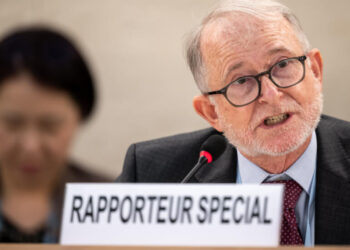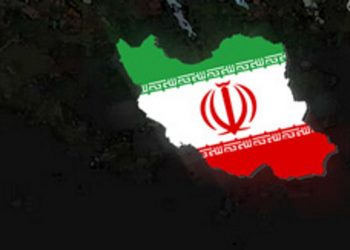Human Lives Human Rights: Nazism, also spelled Naziism, in full National Socialism, German Nationalsozialismus, totalitarian movement led by Adolf Hitler as head of the Nazi Party in Germany. In its intense nationalism, mass appeal, and dictatorial rule, Nazism shared many elements with Italian fascism. However, Nazism was far more extreme both in its ideas and in its practice. In almost every respect it was an anti-intellectual and atheoretical movement, emphasizing the will of the charismatic dictator as the sole source of inspiration of a people and a nation, as well as a vision of annihilation of all enemies of the Aryan Volk as the one and only goal of Nazi policy.
The roots of Nazism
Nazism had peculiarly German roots. It can be partly traced to the Prussian tradition as developed under Frederick William I (1688–1740), Frederick the Great (1712–68), and Otto von Bismarck (1815–98), which regarded the militant spirit and the discipline of the Prussian army as the model for all individual and civic life. To it was added the tradition of political romanticism, with its sharp hostility to rationalism and to the principles underlying the French Revolution, its emphasis on instinct and the past, and its proclamation of the rights of Friedrich Nietzsche’s exceptional individual (the Übermensch [“Superman”]) over all universal law and rules. These two traditions were later reinforced by the 19th-century adoration of science and of the laws of nature, which seemed to operate independently of all concepts of good and evil. Further reinforcements came from such 19th-century intellectual figures as the comte de Gobineau (1816–82), Richard Wagner (1813–83), and Houston Stewart Chamberlain (1855–1927), all of whom greatly influenced early Nazism with their claims of the racial and cultural superiority of the “Nordic” (Germanic) peoples over all other Europeans and all other races.
Hitler’s intellectual viewpoint was influenced during his youth not only by these currents in the German tradition but also by specific Austrian movements that professed various political sentiments, notably those of pan-Germanic expansionism and anti-Semitism. Hitler’s ferocious nationalism, his contempt of Slavs, and his hatred of Jews can largely be explained by his bitter experiences as an unsuccessful artist living a threadbare existence on the streets of Vienna, the capital of the multiethnic Austro-Hungarian Empire.
This intellectual preparation would probably not have been sufficient for the growth of Nazism in Germany but for that country’s defeat in World War I. The defeat and the resulting disillusionment, pauperization, and frustration—particularly among the lower middle classes—paved the way for the success of the propaganda of Hitler and the Nazis. The Treaty of Versailles (1919), the formal settlement of World War I drafted without German participation, alienated many Germans with its imposition of harsh monetary and territorial reparations.
The significant resentment expressed toward the peace treaty gave Hitler a starting point. Because German representatives (branded the “November criminals” by Nazis) agreed to cease hostilities and did not unconditionally surrender in the armistice of November 11, 1918, there was a widespread feeling—particularly in the military—that Germany’s defeat had been orchestrated by diplomats at the Versailles meetings. From the beginning, Hitler’s propaganda of revenge for this “traitorous” act, through which the German people had been “stabbed in the back,” and his call for rearmament had strong appeal within military circles, which regarded the peace only as a temporary setback in Germany’s expansionist program. The ruinous inflation of the German currency in 1923 wiped out the savings of many middle-class households and led to further public alienation and dissatisfaction.
Hitler added to Pan-Germanic aspirations the almost mystical fanaticism of a faith in the mission of the German race and the fervour of a social revolutionary gospel. This gospel was most fully expressed in Hitler’s personal testament Mein Kampf (1925–27; “My Struggle”), in which he outlined both his practical aims and his theories of race and propaganda.
Posing as a bulwark against communism, Hitler exploited the fears aroused in Germany and worldwide by the Bolshevik Revolution in Russia and the consolidation of communist power in the Soviet Union. Thus, he was able to secure the support of many conservative elements that misunderstood the totalitarian character of his movement.
Hitler’s most important individual contribution to the theory and practice of Nazism was his deep understanding of mass psychology and mass propaganda. He stressed the fact that all propaganda must hold its intellectual level at the capacity of the least intelligent of those at whom it is directed and that its truthfulness is much less important than its success. According to Hitler:
“It is part of a great leader’s genius to make even widely separated adversaries appear as if they belonged to but one category, because among weakly and undecided characters the recognition of various enemies all too easily marks the beginning of doubt of one’s own rightness.”
Hitler found this common denominator in the Jewish people, whom he identified with both Bolshevism and a kind of cosmic evil. Jews were to be discriminated against not according to their religion but according to their “race.” Nazism declared Jews—whatever their educational and social achievements—to be forever fundamentally different from and inimical to Germans.
Nazism attempted to reconcile conservative, nationalist ideology with a socially radical doctrine. In so doing, it became a profoundly revolutionary movement—albeit a largely negative one. Rejecting rationalism, liberalism, democracy, the rule of law, human rights, and all movements of international cooperation and peace, it stressed instinct, the subordination of the individual to the state, and the necessity of blind and unswerving obedience to leaders appointed from above.
It also emphasized the inequality of humans and races and the right of the strong to rule the weak; sought to purge or suppress competing political, religious, and social institutions; advanced an ethic of hardness and ferocity; and partly destroyed class distinctions by drawing into the movement misfits and failures from all social classes.
Totalitarianism and expansionism
Working from these principles, Hitler carried his party from its inauspicious beginnings in a beer cellar in Munich to a dominant position in world politics 20 years later. The Nazi Party originated in 1919 and was led by Hitler from 1920. Through both successful electioneering and intimidation, the party came to power in Germany in 1933 and governed through totalitarian methods until 1945, when Hitler committed suicide and Germany was defeated and occupied by the Allies at the close of World War II.
The history of Nazism after 1934 can be divided into two periods of about equal length. Between 1934 and 1939 the party established full control of all phases of life in Germany. With many Germans weary of party conflicts, economic and political instability, and the disorderly freedom that characterized the last years of the Weimar Republic (1919–33), Hitler and his movement gained the support and even the enthusiasm of a majority of the German population. In particular, the public welcomed the strong, decisive, and apparently effective government provided by the Nazis. Germany’s endless ranks of unemployed rapidly dwindled as the jobless were put to work in extensive public-works projects and in rapidly multiplying armaments factories. Germans were swept up in this orderly, intensely purposeful mass movement bent on restoring their country to its dignity, pride, and grandeur, as well as to dominance on the European stage.
Economic recovery from the effects of the Great Depression and the forceful assertion of German nationalism were key factors in Nazism’s appeal to the German population. Further, Hitler’s continuous string of diplomatic successes and foreign conquests from 1934 through the early years of World War II secured the unqualified support of most Germans, including many who had previously opposed him.
Despite its economic and political success, Nazism maintained its power by coercion and mass manipulation. The Nazi regime disseminated a continual outpouring of propaganda through all cultural and informational media. Its rallies—especially its elaborately staged Nürnberg rallies—its insignia, and its uniformed cadres were designed to impart an aura of omnipotence.
The underside of its propaganda machine was its apparatus of terror, with its ubiquitous secret police and concentration camps. It fanned and focused German anti-Semitism to make the Jews a symbol of all that was hated and feared. By means of deceptive rhetoric, the party portrayed the Jews as the enemy of all classes of society.
Nazism’s principal instrument of control was the unification, under Heinrich Himmler and his chief lieutenant, Reinhard Heydrich, of the SS (the uniformed police force of the Nazi Party) and all other police and security organizations. Opposition to the regime was destroyed either by outright terror or, more frequently, by the all-pervading fear of possible repression. Opponents of the regime were branded enemies of the state and of the people, and an elaborate web of informers—often members of the family or intimate friends—imposed utmost caution on all expressions and activities. Justice was no longer recognized as objective but was completely subordinated to the alleged needs and interests of the Volk. In addition to the now-debased methods of the normal judicial process, special detention camps were erected. In these camps the SS exercised supreme authority and introduced a system of sadistic brutality unrivaled in modern times.
Between 1938 and 1945 Hitler’s regime attempted to expand and apply the Nazi system to territories outside the German Reich. This endeavour was confined, in 1938, to lands inhabited by German-speaking populations, but in 1939 Germany began to subjugate non-German-speaking nationalities as well. Germany’s invasion of Poland on September 1, which initiated World War II, was the logical outcome of Hitler’s plans. His first years were spent in preparing the Germans for the approaching struggle for world control and in forging the military and industrial superiority that Germany would require to fulfill its ambitions. With mounting diplomatic and military successes, his aims grew in quick progression. The first was to unite all people of German descent within their historical homeland on the basis of “self-determination.” His next step foresaw the creation, through the military conquest of Poland and other Slavic nations to the east, of a Grosswirtschaftsraum (“large economic unified space”) or a Lebensraum (“living space”), which thereby would allow Germany to acquire sufficient territory to become economically self-sufficient and militarily impregnable. There the German master race, or Herrenvolk, would rule over a hierarchy of subordinate peoples and organize and exploit them with ruthlessness and efficiency. With the initial successes of the military campaigns of 1939–41, his plan was expanded into a vision of a hemispheric order that would embrace all of Europe, western Asia, and Africa and eventually the entire world.
The extravagant hopes of Nazism came to an end with Germany’s defeat in 1945, after nearly six years of war. To a certain extent World War II had repeated the pattern of World War I: great initial German military successes, the forging of a large-scale coalition against Germany as the result of German ambitions and behaviour, and the eventual loss of the war because of German overreaching. Nazism as a mass movement effectively ended on April 30, 1945, when Hitler committed suicide to avoid falling into the hands of Soviet troops completing the occupation of Berlin.
Before the onset of the Great Depression in Germany in 1929–1930, the National Socialist German Workers’ Party (or Nazi Party for short) was a small party on the radical right of the German political spectrum. In the Reichstag (parliament) elections of May 2, 1928, the Nazis received only 2.6 percent of the national vote, a proportionate decline from 1924, when the Nazis received 3 percent of the vote. As a result of the election, a “Grand Coalition” of Germany’s Social Democratic, Catholic Center, German Democratic, and German People’s parties governed Weimar Germany into the first six months of the economic downturn.
During 1930–1933, the mood in Germany was grim. The worldwide economic depression had hit the country hard, and millions of people were out of work. The unemployed were joined by millions of others who linked the Depression to Germany’s national humiliation after defeat in World War 1. Many Germans perceived the parliamentary government coalition as weak and unable to alleviate the economic crisis. Widespread economic misery, fear, and perception of worse times to come, as well as anger and impatience with the apparent failure of the government to manage the crisis, offered fertile ground for the rise of Adolf Hitler and his Nazi Party.
Hitler was a powerful and spellbinding orator who, by tapping into the anger and helplessness felt by a large number of voters, attracted a wide following of Germans desperate for change. Nazi electoral propaganda promised to pull Germany out of the Depression. The Nazis pledged to restore German cultural values, reverse the provisions of the Treaty of Versailles, turn back the perceived threat of a Communist uprising, put the German people back to work, and restore Germany to its “rightful position” as a world power.
Hitler and other Nazi speakers carefully tailored their speeches to each audience. For example, when speaking to businessmen, the Nazis downplayed antisemitism and instead emphasized anti-communism and the return of German colonies lost through the Treaty of Versailles. When addressed to soldiers, veterans, or other nationalist interest groups, Nazi propaganda emphasized military buildup and return of other territories lost after Versailles. Nazi speakers assured farmers in the northern state of Schleswig-Holstein that a Nazi government would prop up falling agricultural prices. Pensioners all over Germany were told that both the amounts and the buying power of their monthly checks would remain stable.
Using a deadlock among the partners in the “Grand Coalition” as an excuse, Center party politician and Reich Chancellor Heinrich Bruening induced the aging Reich President, World War I Field Marshal Paul von Hindenburg, to dissolve the parliament in July 1930 and schedule new elections for September 1930. To dissolve the parliament, the president used Article 48 of the German constitution. This Article permitted the German government to govern without parliamentary consent and was to be applied only in cases of direct national emergency.
Bruening miscalculated the mood of the nation after six months of economic depression. The Nazis won 18.3 percent of the vote and became the second largest political party in the country.
For two years, repeatedly resorting to Article 48 to issue presidential decrees, the Bruening government sought and failed to build a parliamentary majority that would exclude Social Democrats, Communists, and Nazis. In 1932, Hindenburg dismissed Bruening and appointed Franz von Papen, a former diplomat and Center party politician, as chancellor. Papen dissolved the Reichstag again, but the July 1932 elections brought the Nazi party 37.3 percent of the popular vote, making it the largest political party in Germany. The Communists (taking votes from the Social Democrats in the increasingly desperate economic climate) received 14.3 percent of the vote. As a result, more than half the deputies in the 1932 Reichstag had publicly committed themselves to ending parliamentary democracy.
When Papen was unable to obtain a parliamentary majority to govern, his opponents among President Hindenburg’s advisers forced him to resign. His successor, General Kurt von Schleicher, dissolved the Reichstag again. In the ensuing elections in November 1932, the Nazis lost ground, winning 33.1 percent of the vote. The Communists, however gained votes, winning 16.9 percent. As a result, the small circle around President Hindenburg came to believe, by the end of 1932, that the Nazi party was Germany’s only hope to forestall political chaos ending in a Communist takeover. Nazi negotiators and propagandists did much to enhance this impression.
On January 30, 1933, President Hindenburg appointed Adolf Hitler chancellor of Germany. Hitler was not appointed chancellor as the result of an electoral victory with a popular mandate, but instead as the result of a constitutionally questionable deal among a small group of conservative German politicians who had given up on parliamentary rule. They hoped to use Hitler’s popularity with the masses to buttress a return to conservative authoritarian rule, perhaps even a monarchy. Within two years, however, Hitler and the Nazis outmaneuvered Germany’s conservative politicians to consolidate a radical Nazi dictatorship completely subordinate to Hitler’s personal will.


















